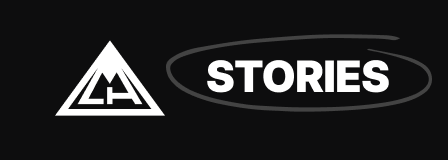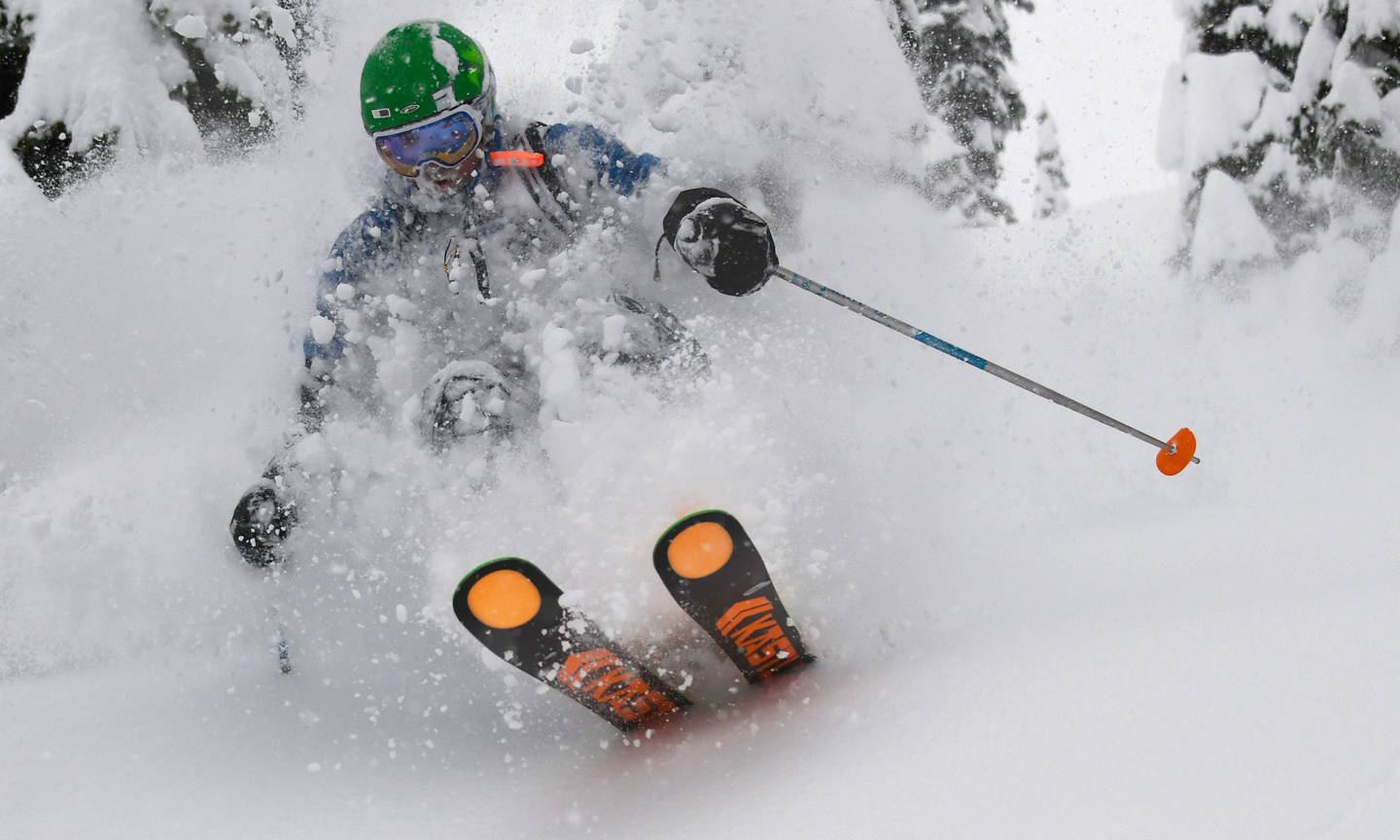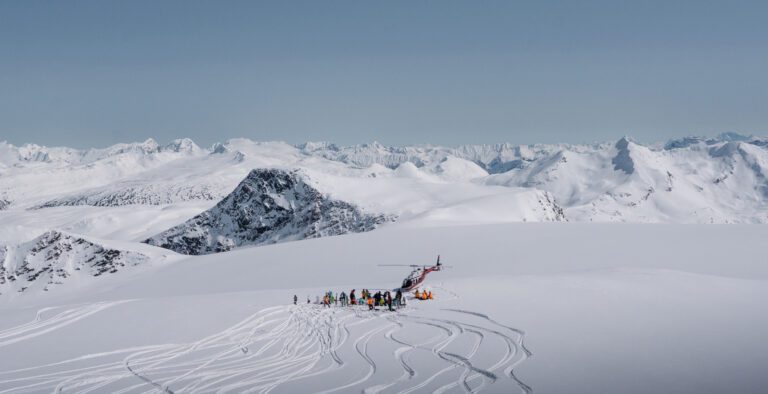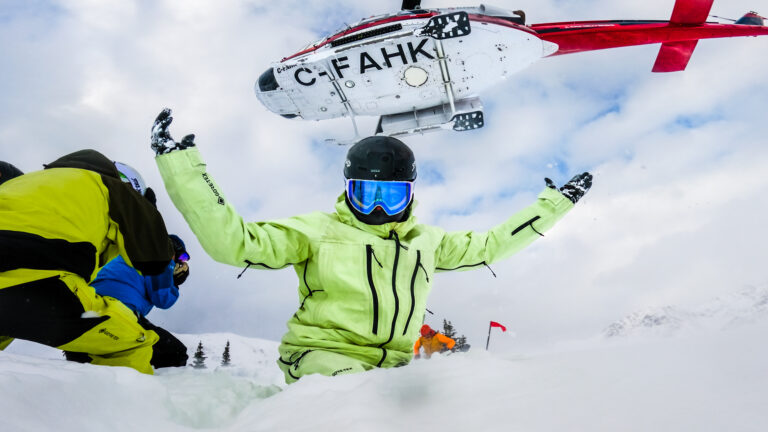WORDS BY KELSEY VERBOOM | FEBRUARY 8, 2021
A blank slate. A reset for the year ahead. New beginnings. These are the things January is typically known for.
At CMH, you’ll find that fresh turns trump fresh starts in January. That’s because the typical snowfall during the first month of the year can be summed up in three words: light, fluffy, and best of all, DEEP. It’s the month of cool temperatures, big storms and enough feathery powder to produce those snow-flowing-over-your-goggles moments heli daydreams are made of.
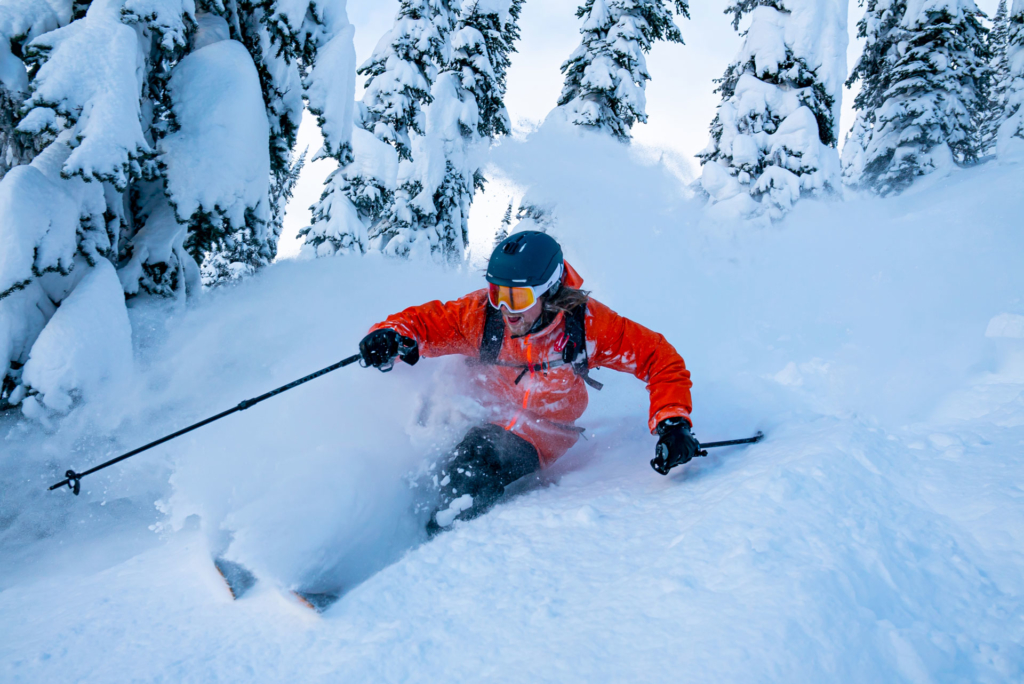
Deeper than you think
If you’re debating when to make your heli-ski or heli-boarding fantasy a reality, January deserves a closer look. With many people clamoring to visit in February to mid-March – traditionally the most popular time of the year – going heli-skiing in January can sometimes be overlooked. As February’s younger sibling, January has a lot to live up to. But if you ask us, the month of new beginnings delivers just as big.
CMH lodges receive an overall average of 349 cm (137 inches) of snowfall in January. For those who are counting, that’s just 10 cm (4 inches) shy of the month of February. January boasts a snow base of around 240 cm (94 inches); add that to average daily temperatures between -3 and -9 degrees Celsius (27 – 16 degrees Fahrenheit) and you’ve cooked up a perfect recipe for the type of dry, light snow that distinguishes British Columbia’s winters from all others.
With snowfall nearly as epic as February’s but with greater booking availability and a price point that’s typically a little lower than February trips, January is a win-win for anyone wanting to dip their skis or boards into the deep stuff.
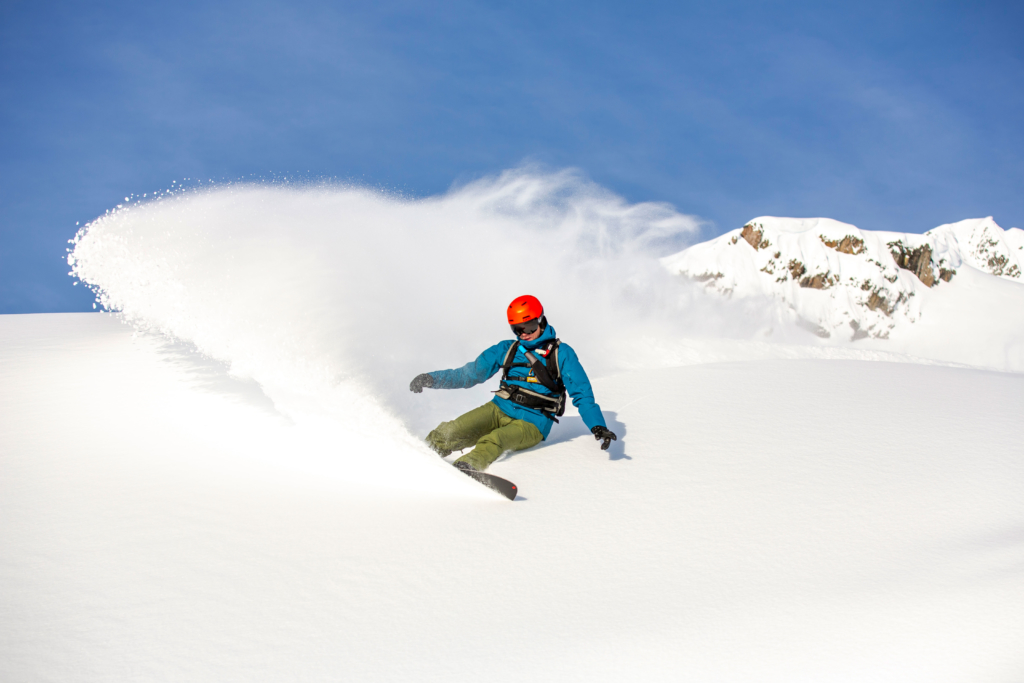
Justin Nan – Deep Thought Productions 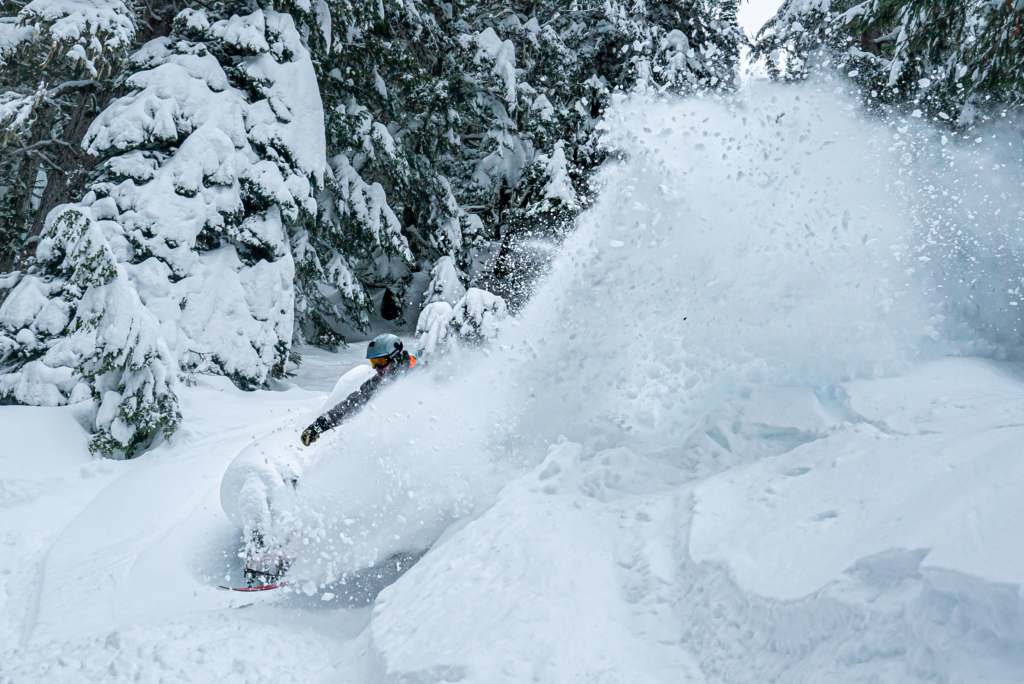
Justin Nan – Deep Thought Productions
Conditions report
More daylight hours become available as January progresses, which means you can stay out skiing longer. The shortest days of the year have already passed, and groups can ski until around 5 p.m. during the latter half of January (if après doesn’t first beckon you back to the lodge, that is).
Though more light-filled hours prevail, the sun’s daily path across the sky remains low at this time of year. That means more terrain stays unaffected by the melt/freeze cycle from the sun’s warmth, so crustless powder usually reigns supreme.
If airy snow is what you live for, pillow drops typically start to become available in January, especially in CMH areas like Kootenay, Gothics, Galena, Revelstoke and the Monashees. These ethereal snow formations are irresistible to many, and if you haven’t yet experienced the sensation of floating from snow pillow to snow pillow, going heli-skiing in January is usually your first opportunity.
Your turn
The weightless powder conditions in January transfix skiers and boarders from around the world. If you’ve ever closed your eyes and imagined a trail of cold smoke – the airy wisps of powder that follow skiers in fresh powder – flowing behind you, this is your month to visit.
